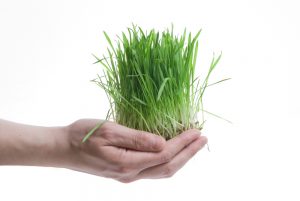
When it comes to having a beautiful, lush lawn, many homeowners have the same question: can I mix turfgrass varieties? There are many different types of turfgrass, and it can be confusing to know which one is best for your lawn. Some people mix turfgrass varieties in the hopes of getting the best of all worlds, but does this actually work?
In this blog post, we will explore the topic of mixing turfgrass varieties in more detail. We will discuss how many turfgrass varieties there are, how they are rated, and what the best types of turfgrass are for the Southeast region. We will also look at the pros and cons of mixing turfgrass varieties and provide some takeaways on whether or not you should mix them for your lawn.

There are over 30 varieties of Bermuda grass!
How Many Varieties of Turfgrass Are There?
There are quite a few different types of turfgrass, and the exact number depends on how you define “variety.” In fact, Turfgrass Producers International (TPI) lists over 50 different species of turfgrass, and within each species, there can be multiple varieties. For example, the common Bermuda grass has over 30 different varieties.
How Are Turfgrass Varieties Rated?
Turfgrass varieties are typically rated by their ability to withstand wear and tear, resist disease, and tolerate various types of climates. The NTEP turf rating system is widely used in the turfgrass industry. In this system, turfgrasses are given a score from 0 to 100, with 100 being the best. Therefore, if you are trying to find a turf with specific characteristics, using this rating can be an effective way to identify turf that would be right for your lawn.
What Are the Best Turfgrass Varieties for the Southeast?
There are a few different turfgrass varieties that are well-suited for the Southeastern United States. The Southeast has a warm climate, and as such, Bermuda grass is a popular choice for lawns in this area.
Other good choices for the Southeast region include zoysia grass and centipede grass. All of these varieties can tolerate high temperatures and humid conditions. Additionally, each of these species has different varieties to best suit specific needs, such as shade cover or rainfall.
What Happens If I Mix Turfgrass Varieties?
The answer to the initial question of “can I mix turfgrass varieties?” is “yes”. You can mix turfgrass varieties as long as they are of the same species. But perhaps the better question is “should I?”
If you mix turfgrass varieties, you may end up with a lawn that is less than ideal. This is because each type of turfgrass has different requirements in terms of sunlight, water, and nutrients. Thus, when you mix different types of turfgrass, it can be difficult to provide the ideal conditions for all of them. As a result, one or more of the turfgrasses may not thrive, and your lawn will suffer as a result.
Pros and Cons: To Mix Turfgrass Varieties or Not?
There are both pros and cons to mixing turfgrass varieties. On the one hand, when you mix turfgrass varieties, you may end up with a lawn that is more resilient and better able to withstand wear and tear.
On the other hand, it can be more difficult to care for a mixed turfgrass lawn, and you may end up with a less-than-ideal lawn if you are not careful. There is no clear set of pros to justify mixing varieties. Instead, you should focus on finding one turf variety that’s best suited to your climate and property.
The Easiest Way to Ensure a Strong, Healthy Lawn
The best way to ensure a strong, healthy lawn is to choose the right turfgrass variety for your climate, soil type, and property characteristics. For example, if your property has lots of shade trees, you will need to select a variety that can thrive in the shade. If you select a variety that does well in your climate and soil type but needs full sun, you will likely end up unhappy with your turf choice.
Therefore, the more focus you put into selecting the right turf, the happier you will be. Once you select the turf, installing sod instead of seed is an easy way to jumpstart a green, lush, and healthy lawn. Finally, when you have installed the right turfgrass, be sure to provide it with the proper care in terms of sunlight, water, and nutrients. If you do this, you will be well on your way to having a beautiful lawn that will be the envy of your neighborhood.
Takeaways on Whether You Should Mix Turfgrass Varieties for a Healthy Lawn
So, should you mix turfgrass varieties for a healthy lawn? There is no one answer to this question. It depends on your specific lawn needs and conditions. If you are not sure whether mixed turfgrass is right for you, it is best to consult with a turf-growing professional. They will be able to assess your needs and give you the best advice on which turf to install to achieve a healthy, lush lawn.
